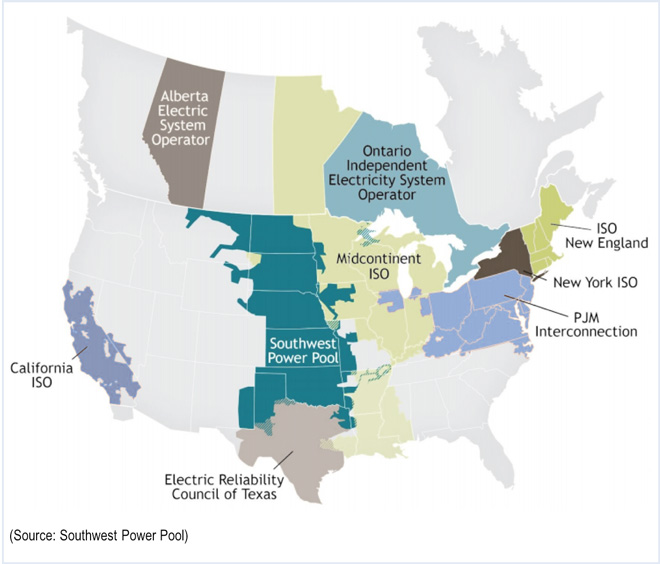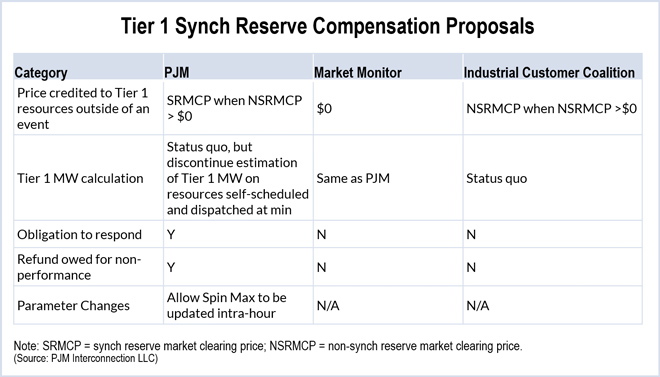PJM’s Capacity Performance plan approved by the Federal Energy Regulatory Commission borrows elements from ISO-NE’s Pay-for-Performance program. Below is a summary of some key differences between the two plans followed by the relevant paragraph numbers from the order.

- Annual Stop-Loss Limit: PJM’s annual non-performance charge stop-loss limit is equal to 1.5 times the annual net cost of new entry (CONE) rather than the auction clearing price as in ISO-NE. The commission acknowledged that PJM’s stop-loss limit will likely be higher than ISO-NE’s but said it was reasonable. “An important element of PJM’s overall proposal is to put at risk full capacity auction revenues if a resource completely fails to perform during performance assessment hours. Because the proposed annual stop-loss limit is equal to the maximum clearing price allowed by PJM’s Variable Resource Requirement curve, it meets this criterion,” FERC said. “In addition, basing the limit on net CONE ensures that market participants will know their maximum risk exposure in assuming a Capacity Performance commitment and be in a position to formulate their sell offers accordingly.” (¶164)
- Trigger for Performance Assessment Hours: PJM will use the declaration of Emergency Actions as the trigger for performance assessment hours. In contrast, ISO-NE’s trigger is a shortage of system 30-minute reserves, system 10-minute reserves or zonal 30-minute reserves. “While PJM’s proposed trigger is more expansive, to include certain warnings and pre-Emergency Actions, we find that PJM’s approach would accurately correspond with conditions and events during which the system is experiencing, or may reasonably expect to experience, a shortage of capacity,” the commission said. “We find that this approach will appropriately trigger performance assessment hours when performance is most critical to the PJM system.” (¶186)
- Transition Mechanism: FERC said PJM’s transition mechanisms strike an appropriate balance between procuring too much or too little capacity able to qualify as a Capacity Performance resource. Although the commission approved ISO-NE’s proposal to acquire only its performance product in its next auction, “PJM has demonstrated that a phased-in approach is also just and reasonable,” FERC said. (¶256)
- Withholding: The commission rejected the Market Monitor’s suggestion that PJM adopt ISO-NE’s use of resources’ installed capacity values to define required performance. The Monitor said PJM’s reliance on unforced capacity could result in withholding by allowing a supplier with a large portfolio to reduce its available capacity from some of its resources to result in a higher clearing price for the entire portfolio. Such suppliers also could reduce unforced capacity available from some of its resources as a hedge against unexpected outages on other units. The commission said “the likelihood of such a strategy is mitigated by a resource deliberately forgoing considerable energy revenue in the hopes that the withholding strategy and any additional performance payments during Emergency Actions would outweigh the forgone energy revenue.” It said the Monitor should work with PJM to devise an alternative mitigation mechanism if it finds evidence of such strategies. (¶358)
- Application of Non-Performance Charges: The commission approved PJM’s proposed application of non-performance charges, although it said it was “more lenient” than that applied by ISO-NE. It noted that the “more significant” of PJM’s proposed revisions regards generator maintenance outages as opposed to planned outages. “We agree with PJM that a generator on a planned outage should not be expected to return to service within a time interval of less than 72 hours. We also find reasonable PJM’s proposal requiring a generator on a planned outage to provide PJM with an estimate of the amount of time it will require to return to service. This requirement presents no significant burden to the resource but will assist PJM in operating its system during tight conditions,” FERC said. (¶496)






